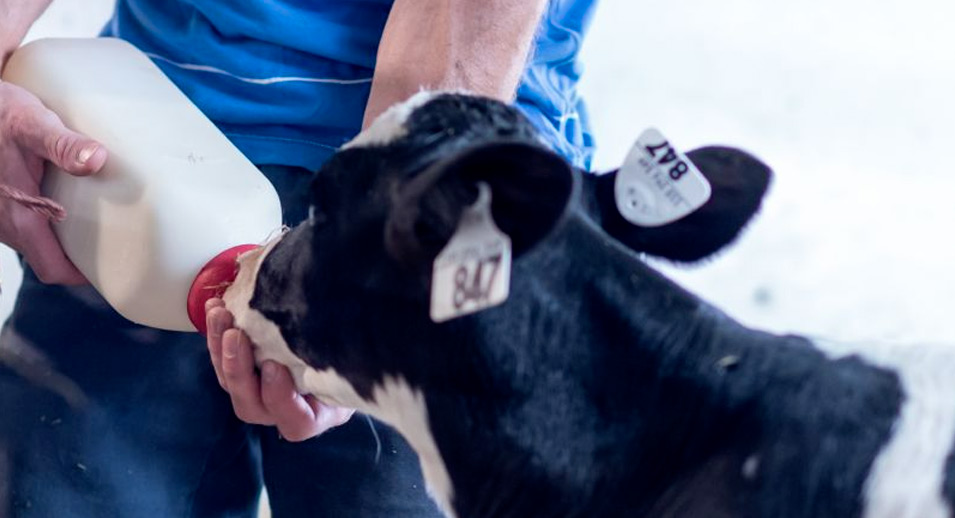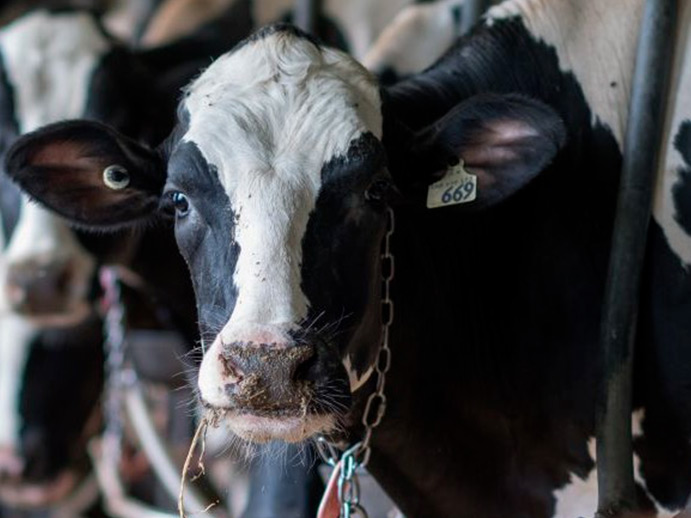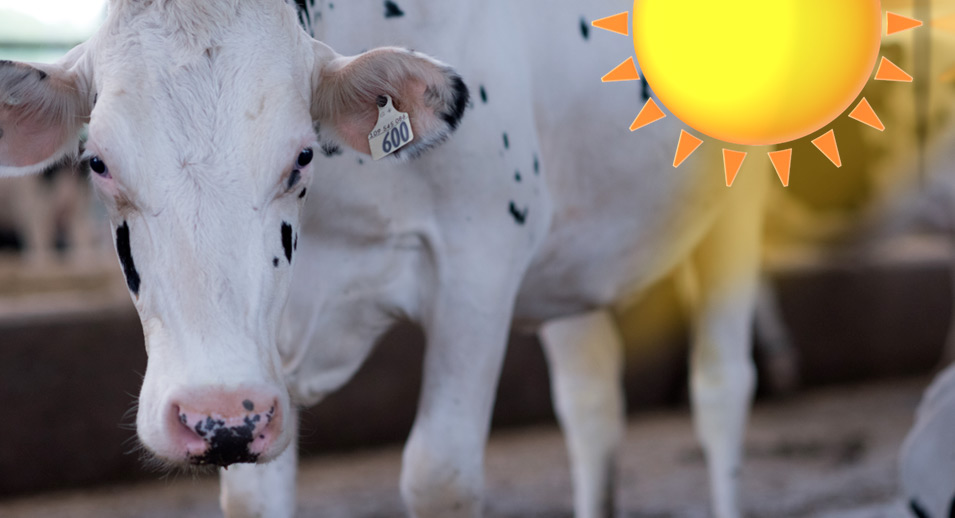Is heat stress different with robot milking systems?
- August 6, 2019
On farms with robot milkers, the cows decide how many times a day they are milked by the robot. Like other stresses, (environmental, herd management or herd health) heat stress is likely to be more detrimental to herds with milking robots. Luckily, you have access to more data that can help you detect the negative effects of heat stress earlier.
Last year, there was an extreme heat wave at the beginning of July. Temperatures in the first five days rose to above 30 degrees Celcius and the humidex was above 40 on three of them. The specifics from each of these days are listed in the table below.
Table 1. Values Recorded at the Lennoxville Weather Station
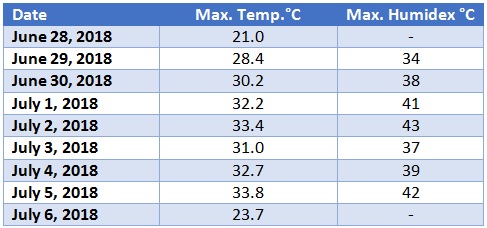
Rumination and Heat Stress
Among the parameters measured by the robot, rumination is probably the most efficient at measuring heat stress. Rumination is not only efficient at measuring a deterioration in animal health, but is also a good indicator of the amplitude of heat stress. The following data was taken from eight farms in the Centre-du-Québec and Estrie regions during the heat wave. These farms were randomly chosen and do not necessarily take into account the equipment used to minimize the impact of the heat.
Graph 1. Variation in Rumination according to Outside Temperature during the July 2018 Heat Wave
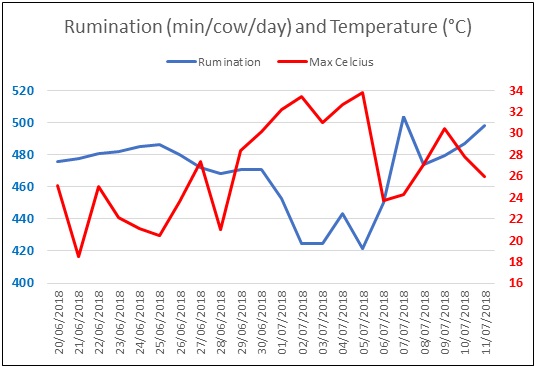
As you can see, the variation in rumination is opposite to that of temperature (°C). Rumination began to drop on June 30th and the very low rate of rumination recorded on July 2nd coincides with the peak temperature for this same date. The peak temperature for July 5th corresponds to the very low rumination data for the same date. Rumination dropped from 470 to 425 minutes per day, a decrease of 9.6%. On July 6th, when the temperature went back to normal, rumination also returned to normal. There is, therefore, a good correlation between rumination and temperature. Robot reports can help you to follow cows on an individual basis and identify those that are affected the most so that you can focus more specifically on those cows. Some reports can also be personalized to provide a daily herd average.
Milk Production
As would be expected, the average milk production from these eight farms dropped during the heat wave. The decline in production began on June 30th and took longer than the decrease in rumination, but continued until July 6. With that severe heat wave, the decline in milk production continued for longer than indicated by the drop in rumination. The average decrease was 3.9 kg of milk or 11.6% therefore, the decline in rumination and production are similar in percentage. Note that close to a week after the heat wave, milk production had still not returned to previous production levels.
Graph 2. Variation in Rumination and Milk Production during the July 2018 Heat Wave
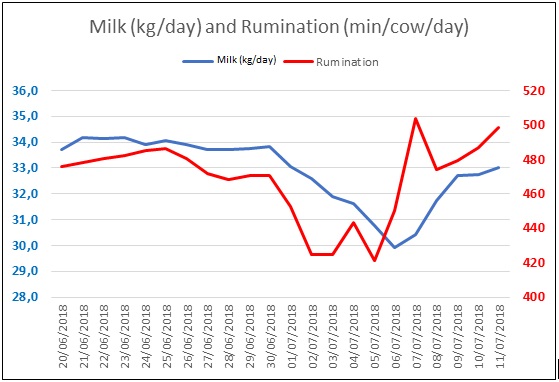
Variable Robot Parameters
When it is hot outside, cows are less inclined to go to the robot to be milked and this can result in a drop in the number of milkings. When the number of milkings drops, the allotted amount of concentrates per feeding is higher and the cows will often not eat all of the concentrates they were expected to. This explains the variation in the robot parameters during this heat wave.
Graph 3. Variation in Number of Milkings and Percentage of Refused Feed during the July 2018 Heat Wave
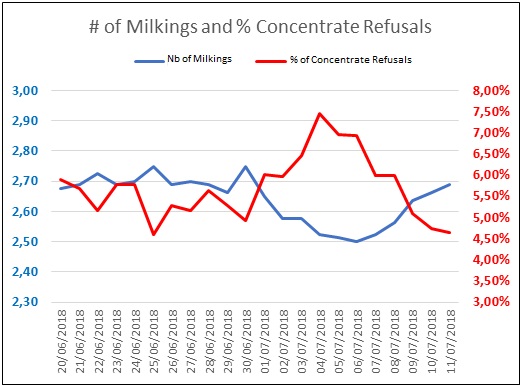
An increase in concentrate refusals can be doubly detrimental. During periods of heat stress, a cow’s intake of partially mixed ration will often drop, and at the same time, they are penalized at the robot where concentrate intake is also lower. This can contribute to a heightened drop in production.
Furthermore, because there is an increased amount of concentrates per meal, the risk of acidosis is also higher.
Minimizing Heat Stress
The solutions with robot milking are quite similar to those used with other milking systems:
- prioritize good airflow in cow stalls so that it does not influence the number of hours lying down or reduce dry matter intake;
- feed two rations per day to keep the ration from heating;
- feed out the ration earlier in the morning and later in the evening when temperatures are more moderate;
- push the ration in regularly;
- increase water availability, intake will be 25 to 50% higher;
- provide good ventilation around the robot so that the number of milkings do not decline.




